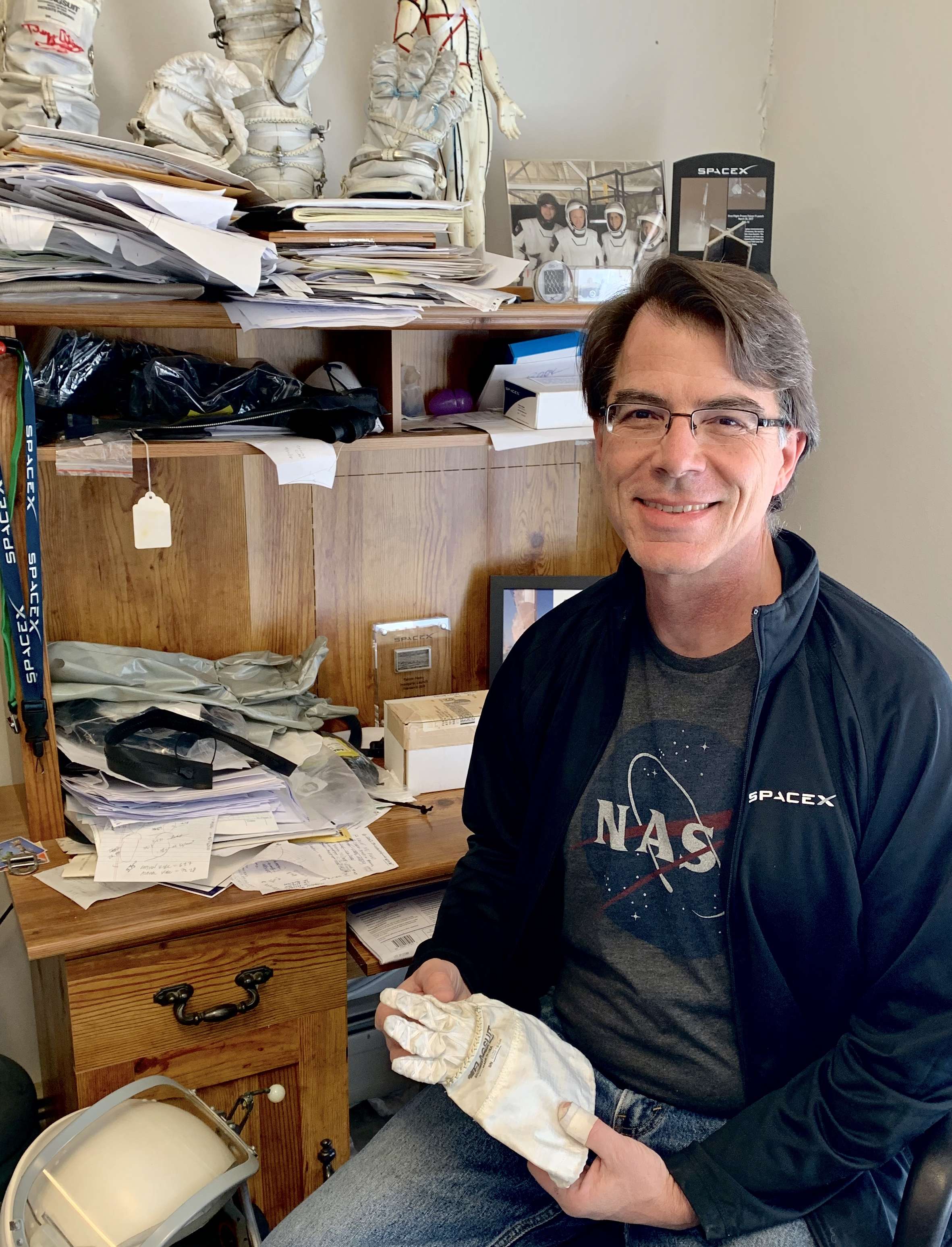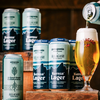
Mission from Maine: MDI man helped design SpaceX spacesuit
 Courtesy / Flagsuit
Peter Homer of Southwest Harbor is seen here in an early photo demonstrating a new kind of spacesuit glove he developed for NASA competitions in 2007 and 2009.
Courtesy / Flagsuit
Peter Homer of Southwest Harbor is seen here in an early photo demonstrating a new kind of spacesuit glove he developed for NASA competitions in 2007 and 2009.
When Peter Homer sat down at his dining room table in 2006 to design a spacesuit glove as part of a NASA competition, it was for fun.
He didn’t realize he’d be launching a new facet to his career, culminating in helping to design the spacesuit worn by astronauts during last Saturday’s Falcon 9 rocket launch in Florida.
Last Saturday, the Southwest Harbor resident was thrilled to watch NASA astronauts Bob Behnken and Doug Hurley wearing the suit when they boarded SpaceX’s Falcon 9 for the first manned space flight from U.S. soil since 2011. The Falcon 9 docked with the International Space Station on Sunday, and the crew may remain at work there for up to four months.
Back on Earth, Homer spoke with Mainebiz about his work with SpaceX, the aerospace company founded by Elon Musk, and about getting the manned-flight project off the ground.
“In 2006 I sat down at my dining room table and started on this ride,” he said. “I thought it would be a fun side project and then I would move on. At the time, I had been out of aerospace engineering for almost 12 years. I said, ‘This is fun.’”
Homer has a B.S. in mechanical engineering from Rensselaer Polytechnic Institute and an M.S. in aeronautical and astronautical engineering-advanced composite structures from Stanford University. His career started in the 1980s with Grumman Aerospace in its space systems division and product development center, working on launch configurations, payload integration and structural subsystems for commercial and military satellites. Homer holds 12 patents related to flexible joints, space structures and other engineered products.
He went on to develop commercial communications satellites for Lockheed-Martin Space Systems, where he worked until the mid-1990s. For the next 10 years, he worked in systems engineering and engineering management for software companies SDRC, Netscape, AOL and Sun Microsystems.

In the 2000s, he and his family decided to return to Southwest Harbor, where he has roots going back to the 1890s. Homer then spent two years as executive director for a local nonprofit.
In 2006, he entered NASA’s “Astronaut Glove Challenge,” which sought innovative designs to reduce the effort needed to perform tasks during spacewalks.
The competition was held in 2007 and Homer won, earning a $200,000 prize. He came out on top again for NASA’s second glove challenge in 2009, winning another $250,000.
In 2007, Homer founded a company called Flagsuit LLC to commercialize technology developed for the glove. The company focused on streamlining the production of "made to fit" elements, using flexible joint technology, for suborbital and future planetary space suits, according to its website.
Flagsuit shipped its first commercially produced space suit gloves to Los Angeles-based Orbital Outfitters in 2008 under a joint development agreement. The gloves were designed to be used with the California company’s industrial suborbital space suit.
In addition to expanding the range of applications for the gloves, Flagsuit also worked to apply its flexible joint technology to the larger joints of a full-body pressure suit.
In 2013, SpaceX invited Homer and other companies to submit spacesuit prototypes that met a range of aesthetic requirements.
“That was an open project and we all worked on it competitively,” he said.
None of the prototypes moved forward, but Homer was invited back, first as a contractor and then as an employee, to be part of SpaceX’s suit development team. His primary area of responsibility was to develop pressure garment and pressure controls for the spacesuit.
He extended his glove patterning methodology to the entire suit, generating a fully customized, bespoke suit from each crewmember's body measurements.

Over the next five years, he Homer worked remotely from his office in Southwest Harbor to develop suit patterns and prototypes, traveling monthly to SpaceX’s facility in California.
The development was based on new specifications provided by NASA and took into account in-depth analysis of the Challenger disaster in 1986, when the space shuttle broke apart shortly after launch; and the 2003 Columbia disaster, when the shuttle disintegrated during reentry. Both disasters killed all crew members.
Parameters for SpaceX’s new, one-piece suits included systems that would help crew members survive an accident. That included full automation for pressurization and protection even if the astronaut is unconscious.
“The pressure suits are connected with the capsule’s systems,” Homer said. “Once you’re in the suit and connected for launch, entry, docking or other high-risk operations, the astronauts don’t have to do anything manually to activate the suit. It’s completely automated.”
The suits also improve functionality through a slimmer and more flexible fit that’s customized for each wearer, he said.
Unfortunately, he doesn’t have rights to any of SpaceX’s images of the suit. But it can be partly seen on the company’s website.
His previous glove work translated to suit design.
“The technology I developed with the gloves is embedded with the suit,” he said. That included their custom-fit and flexible joint characteristics.
Homer’s employment with SpaceX ended last year, when certification of the new suit was nearly complete. Since then he’s been working part-time at a small custom vinyl graphics company he acquired in 2013, just before his initial contact with SpaceX.
But he said he’s got his own relaunch in mind, with plans to gear up Flagsuit and develop a suit for space walks and human exploration of the moon and Mars.










0 Comments